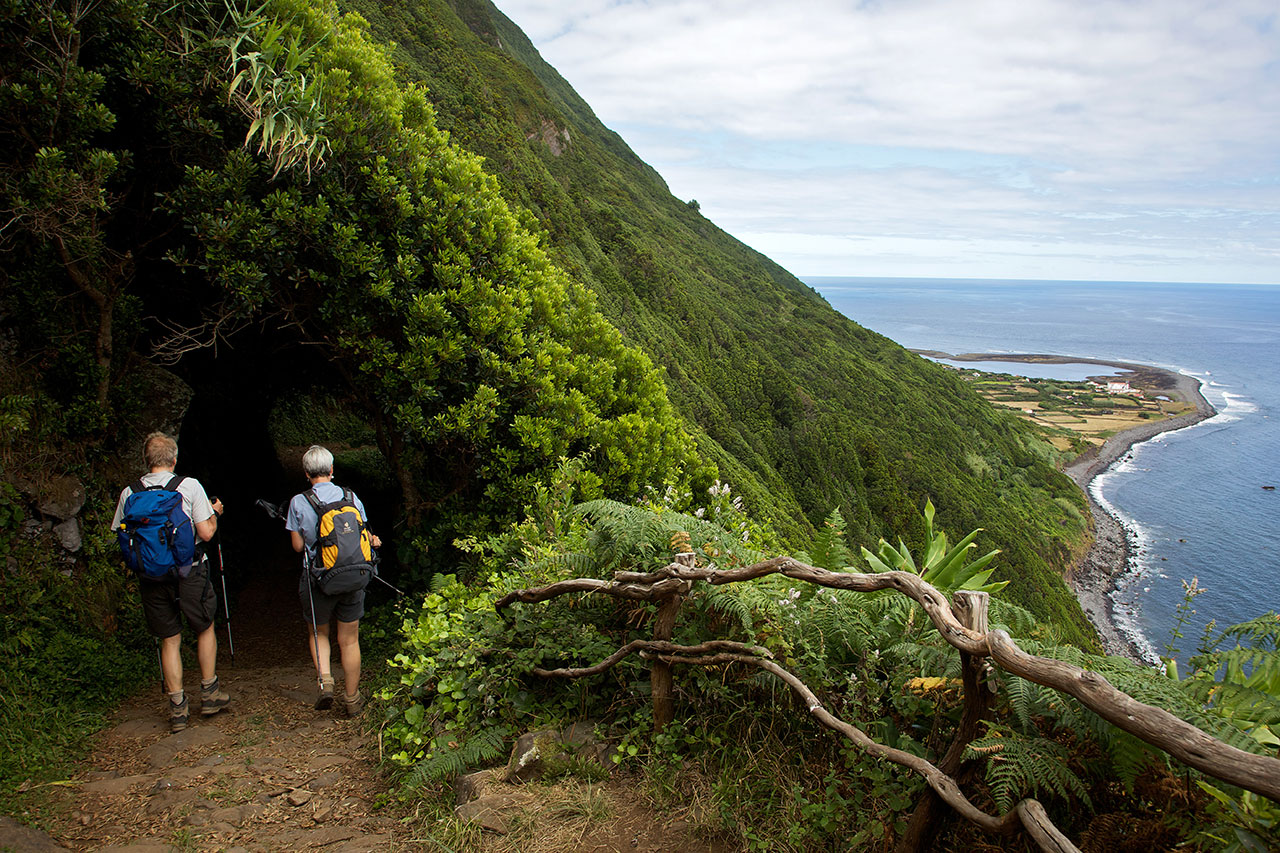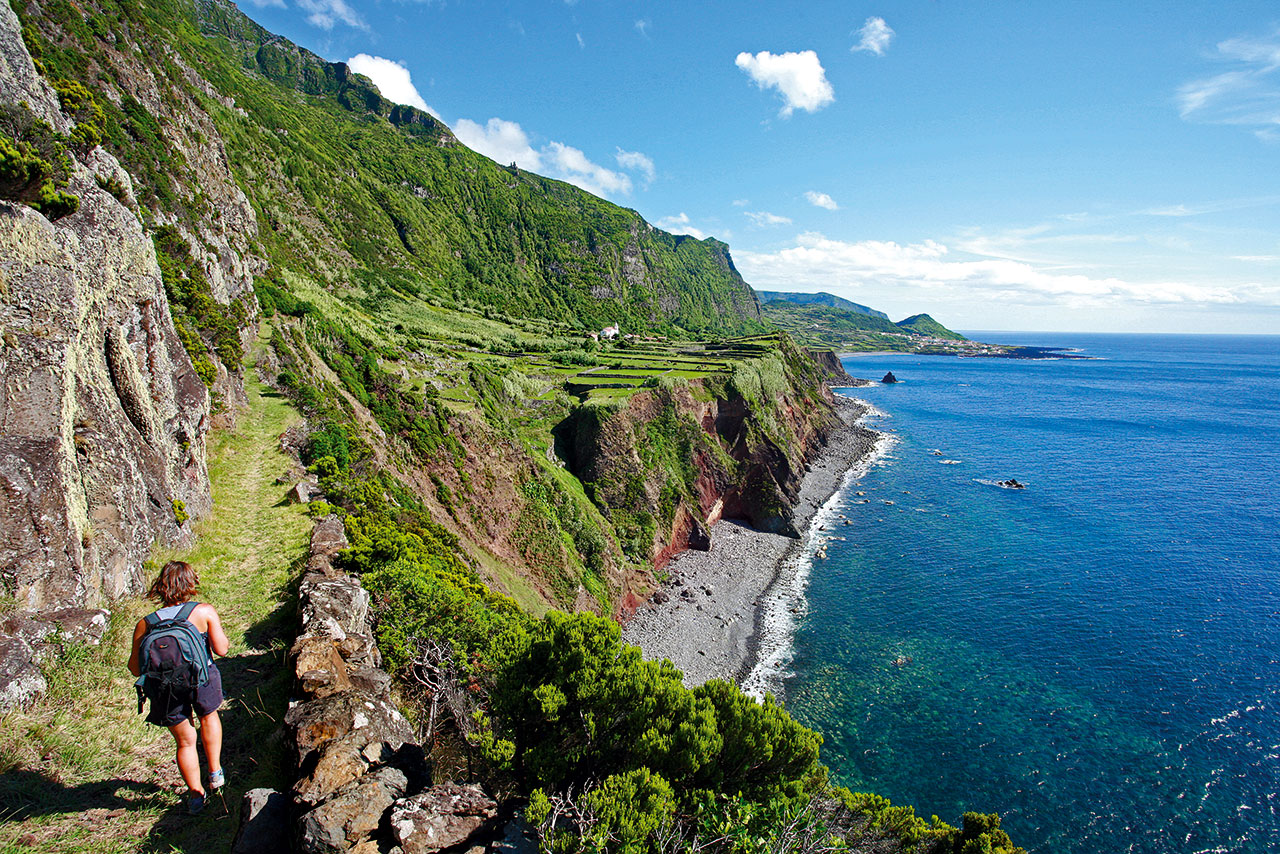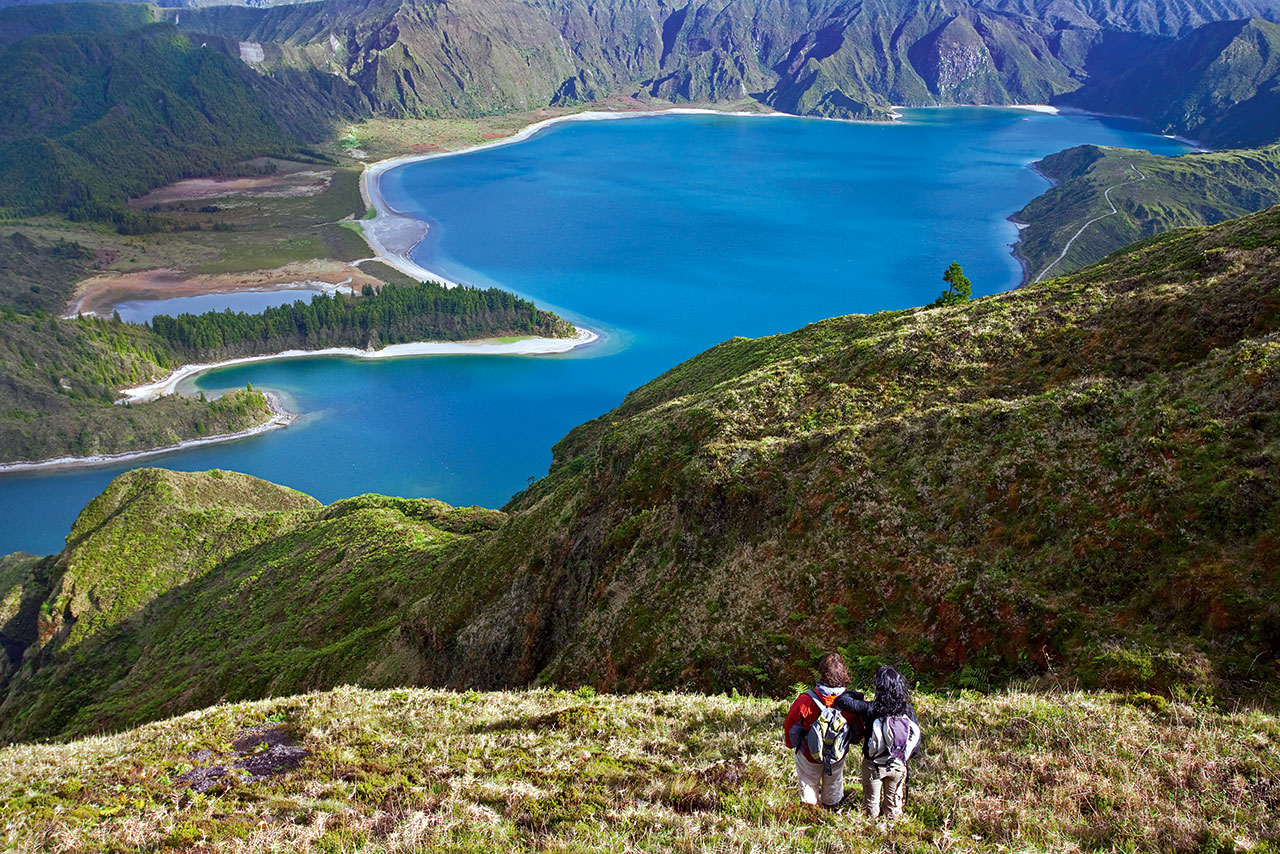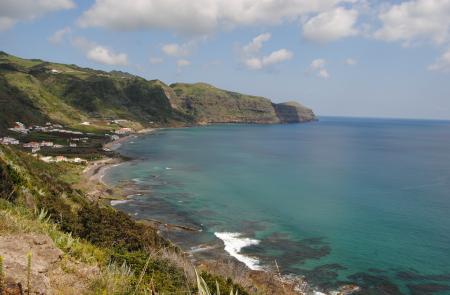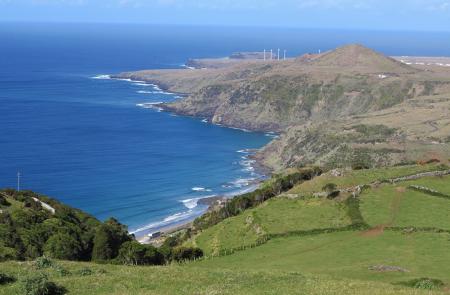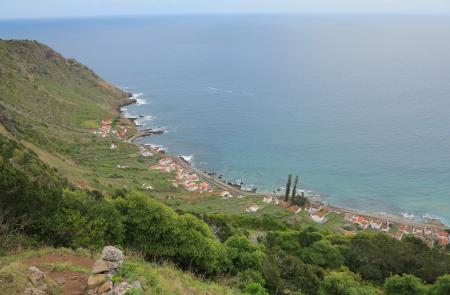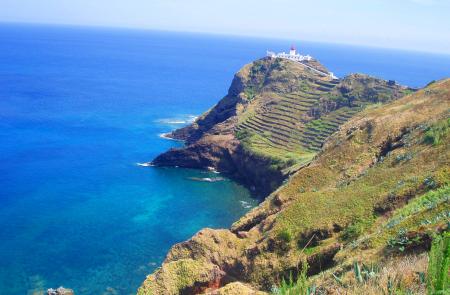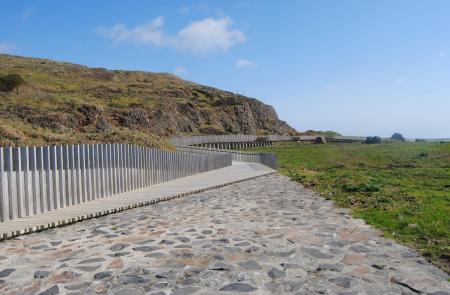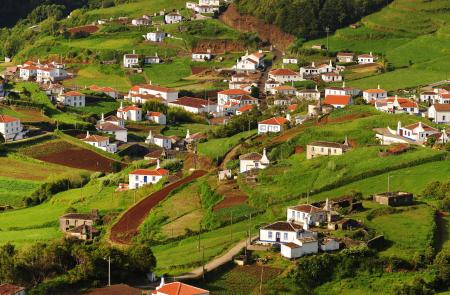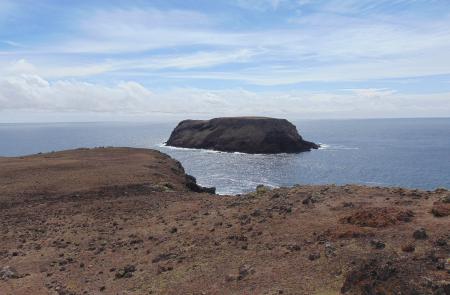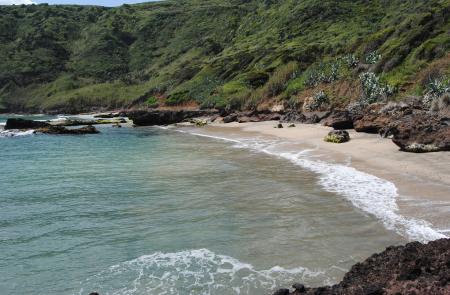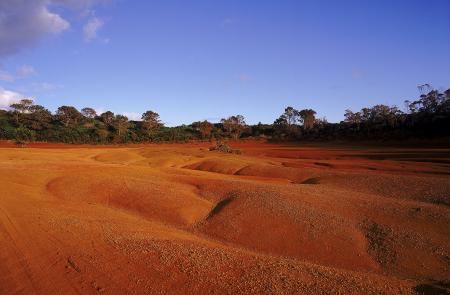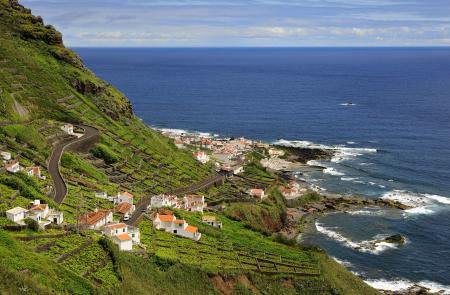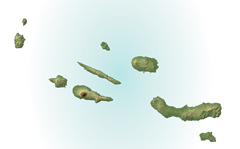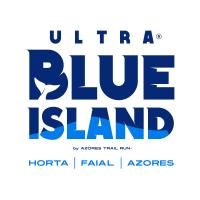Great Route of Santa Maria - Santa Maria
Trail Info
The Great Route of Santa Maria takes in the whole island and over 78 circular km of lanscapes incluing areas of great geomorphological interest. On the trail, you will see evidence of several types of erosion and sea water levels changing, which conveys the island’s particularities to places of incredible scenic beauty, as well as areas of educational and scientific interest.
Discover beautiful fauna, and considering the location of the Azores in the Northeast Atlantic, several species of migrant birds which use the Azores as a resting place.
Whenever possible enjoy the natural bathing areas (which are spread out across island) to relax and revitalise, The urban and rural centres should be used to purchase any supplies you may need for the walk.
Along the trail there are small signposted detours which lead to viewpoints with outstanding landscapes.
The trail is divided into four stages, of approximately 20km each. You should plan your walk according to your physical ability, interests and availability. There are stations and designated places to spend the night (Tourism on the Country side and Hostels), as wild camping is forbidden.
This walking trail crosses protected areas and natural reserves. It’s our responsibility to contribute to its protection as well as to ensure its biodiversity through the preservation of this natural habitat.
Outline
Trail Information
STAGE 1 - VILA DO PORTO – CARDAL
Extention: 17,1 km
Duration: 7h00
This stage, with 17,1 km along the South coast connects Vila do Porto and the rural area of Cardal.
Begin the trail near the Fortress of São Brás and leaving the village, go down to Ribeira of São Francisco. The trail continues towards East on an ascending route until Pedreira do Campo, a geosite that aims the preservation and promotion of this geological, paleontological and volcanology singularity where it is possible to observe marine fossils. From here the trail proceeds through farming fields, passing by the caves Grutas do Figueiral, towards Prainha and Praia Formosa. In case of stormy sea disturbance, choose the alternative path.
Before reaching Praia Formosa, you will pass by a connection to Baía of São Lourenço through PR 06 SMA – Areia Branca. Leaving the bathing area you will pass by the Chapel of Nossa Senhora dos Remédios and from here, the route follows the old road of Praia. This old ascending passage connects the bay to the village of Santo Espírito.
Continue along the coastal area through rural roads and some sections on the regional roads, where you should be careful, towards Ponta da Malbusca, with a privileged view over the entire Southwest coast. The trail goes down, passing by the stream Ribeira do Maloás, a geosite with an impressive geological formation.
Continue through farming roads and as you approach the end of this leg, it is possible to make a detour to enjoy the Chapel Nossa Senhora da Boa Morte. Follow the marks through dirt roads, wood areas and farming fields until you reach Cardal
STAGE 2 - CARDAL - NORTE
Extention: 21,5 km
Duration: 7h30
The trail between Cardal and Norte takes in 21.5km of the east coast of the Island.
Follow the regional road towards Ponta do Castelo, passing the viewpoint of Tia Raulinha. Proceed on a dirt road as far as the fork, leading towards the lighthouse of Gonçalo Velho, at Ponta do Castelo. Visitors can stay here (booking required) or just appreciate the endemic flora and geological phenomena.
From here the path continues North, passing the natural swimming pools of Maia and continuing as far as Lapa (de Baixo). On this section there is a detour to the waterfall of Aveiro.
After visiting the waterfall, proceed along the trail until you reach a farm road. When you can see the ruins of a windmill, you will have reached the entrance of the parish of Santo Espírito.
Inside the village, look for the Museum and you will find a dirt road to Caminho do Pico. The trail continues north passing through the villages of Santo António, Azenha de Cima and Azenha de Baixo. Take the brick road to the viewpoint of Espigão and enjoy the view over the Bay of São Lourenço.
When leaving the viewpoint, the trail goes through farmland and crosses the creek of Salto towards São Lourenço bay. Take the stairway going down through the vineyards towards the bay and when you reach the end of it take the access road to Fajãzinha, leading to Barreiro. Then turn right and continue along the trail on a regional road, towards the north.
Exit the regional road on your right taking the access road to the viewpoint of Pias (view over São Lourenço bay) and continue until you reach the LOURAN station.
At this stage enjoy the north coast and the islet of Lagoínhas. From here, the road goes south until the end of the trail at Norte.
STAGE 3 - NORTE -BANANEIRAS
Extention: 16,5 km
Duration: 6h30
This trail between Norte and Bananeiras travels for 16.5km through the inside of island.
From the centre of the Norte, follow signs towards Santa Bárbara’s Parish, going throw Lagos, Poço Grande and Boavista.
At Santa Bárbara, look for the church of Sagrado Coração de Jesus, turn left until you find a prep school. Here choose the dirt road going up to the regional road. From this point on, go right until you reach Poço da Pedreira, a geosite on the outskirts of Pico Vermelho.
Following the sign, go through Arrebentão and Forno, before taking a pedestrian way to Salto creek, where you can see the Cai’Água waterfall.
When you reach a fountain go west on a dirt road to Cruz dos Picos. From here go north on a regional road until you get to Pico Alto, which boasts an abundance of endemic species of flora and is also the highest point of the island at 587 metres.
At this point go down a stairway towards Caldeira and through a forested area, where you will find a landmark/viewpoint over São Pedro village.
The path goes down to the regional road until a junction where you turn right. This last stretch of the trail goes through forested and agricultural lands, ending at a fountain next to the road leading to Bananeiras, our final stop.
STAGE 4 - BANANEIRAS - VILA DO PORTO
Extention: 23,5 km
Duration: 8h00
This trail between Bananeiras and the historical centre of Vila do Porto, goes through the west coast of the island and is 23.5 km in length.
Leave Bananeiras heading to Raposo Bay, a geosite with ruins of watermills and some remains of vineyards and wine production.
Continue west towards another geosite – Barreiro da Faneca, the site of the Azores last volcanic eruption where the soil is red due to the clay in it. On this part of the path there are several detours providing access to viewpoints over the north coast, particularly the one of Ponta do Pinheiro and Cré bay.
When you reach the end of this dry area, the path leads up to Monte Gordo. From here go to Ponta dos Frades, continuing towards Anjos. At this point walk along the Lamos Creek until you find the statue of Cristóvão Colombo, at the centre of the village.
Go round the bay through agricultural fields, then descend to a pebble beach. Enjoy this bathing area, then head to the fishing harbour and continue on to Capitão creek. Along the dirt road you will see the bay of Cabrestantes and as you go along the Airport will appear on the horizon. This section is (on a surrounding path) between the shoreline and the airport fence (southwest side).
Once you have reached the end of the airport, go to Seca’s Creek mouth,a protected area with a nice view over the islet of Vila. From here follow the shoreline to Ponta do Malmerendo.
The final stage of this path is surrounded by slopes, making it possible to see the commercial harbour and the centre of the village. Follow the dirt road, proceeding to the historical centre of the village.
